Athabasca sedimentary basin, located mainly in Canada’s Saskatchewan province, contains both high-grade and high-tonnage unique, a.k.a “unconformity” bonanza-type uranium deposits.
Just for comparison, Priargunsky underground uranium mine in Trans-Baikal region of Russia has approximately 0.15% grade of uranium in resources, while in Saskatchewan the world’s highest-grade and second-biggest Cigar Lake underground uranium mine boasts an average 15% grade of uranium in resources. And this is a mind-blowing 100-times difference.
In addition, Rio Tinto’s struggling Rossing open-pit uranium mine in Namibia has ~0.03% grade of uranium in resources, while recently calculated open-pit portion of Fission Uranium’s Patterson Lake South deposit has yielded 19% grade of uranium in resources, and this is a fantastic 630-times difference!
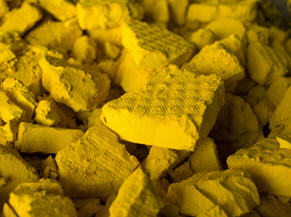
This is how a common sterotype of uranium as the “yellow” metal looks. Source: https://resourceclips.com/
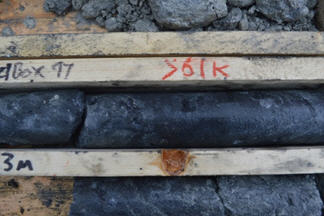
… and this is the reality. Black-coloured is the mineral called pitchblende, extremely enriched with primary uranium (contains >50% of uranium). Caution: highly radioactive! Source: NexGen Energy’s drill core from its Rook 1 deposit, Saskatchewan
What is that unique about Athabasca? The first Athabasca uranium deposits were discovered in the early 1950s and Eldorado (now Cameco Corp.) began mining at Beaverlodge Mine in 1953. But nothing was special about first deposits discovered there, which had ordinary uranium grades in ores and located out of Athabasca Basin borders.
In 1967, a consortium of companies, the Dynamic Group, seized the opportunity to obtain the state financing provided by the Saskatchewan Government to boost exploration activities, and decided to fly a systematic radiometric survey of the unexplored sandstones of the Athabasca Basin.
In October 1968, as a result of following up airborne anomalies, a consortium drilled the first hole into the Rabbit Lake deposit. An exploration model which had been designed to find sandstone hosted deposits actually led to the discovery of and orebody in the underlying basement rocks. These highest-grade uranium deposits in the world, located on the contact between the overlying Athabasca sandstones and basement crystalline rock, later became known as the “unconformity” bonanza-type uranium deposits.
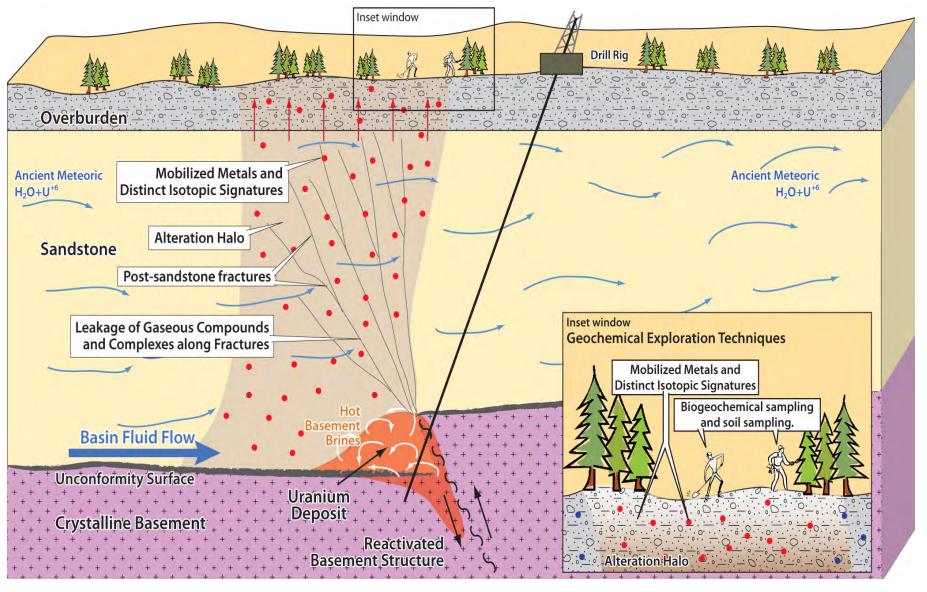
A cross-section of typical inconformity uranium deposit and its traces on the surface. Source: Uravan Minerals Inc.
Discovery of the Rabbit Lake deposit, which is still being exploited by Cameco unveiled one amazing thing about unconformity type deposits. It turns out that simple radioactive boulder found on the surface could be a reliable precursor of the richest uranium deposits rested at the depths of much more than 500 meters. Nearly all subsequent discoveries were accompanied with mineralized boulders and boulder fields. Later on, scientists also confirmed that those believed-to-be “blind” deep deposits in fact leave traces on the surface with the radon emanation and different geochemical processes and alterations.
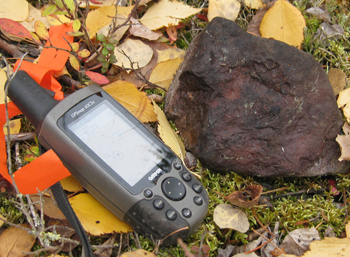
A radioactive sandstone boulder found on Lakeland’s Gibbon’s Creek property. Source: Lakeland Resources.
Next year, in 1969, Cluff Lake deposit with high-grade ore (up to 6% of Uranium oxide) was discovered, and the same year almost all of northern Saskatchewan had been claimed by mineral permits. By 1972, due to fruitless prospecting by many participants, many exploration permits in the area were dropped, but work undertaken at this time provided clues that further expanded understanding and bolstered development of geological, prospecting and exploration models of this type of U deposits.
In 1975, as an important outcome of the Key Lake deposit discovery, geologists figured out that graphitic politic gneisses forming the basal unit of the Athabasca unconformity are firmly controlling the locations of unconformity deposits. Since these graphitic units are recognizable on surface as electromagnetic conductors, a new important step has been added to the exploration model, magnetic and electro-magnetic geophysical surveys.
In 1968-1977 exploration activities in Athabasca was primarily aimed at discovery

Airborne magnetic survey aircraft. Source: Saskatchewan Ministry of the Economy.
of the near-surface deposits amenable for open-pit mining method. In 1977, curious prospectors drilled a zone of radioactive boulders deeper underground and discovered Midwest deposit at the depths exceeded 300 meters from surface.
The Midwest discovery demonstrated that the deeper parts of the Athabasca Basin are very prospective for rich uranium deposits. And immediately after it, much of the Athabasca was staked again and a new era of massive high-grade underground uranium discoveries began.
After the discovery of Dawn Lake (1978) and McClean Lake (1979) deposits, geologists uncovered the “uranium gem”, the Cigar Lake deposit (1981), currently being recognized as the world’s highest-grade and second-biggest uranium mine.
In 1988, another massive deposit, McArthur River, was discovered and now this is the world’s biggest uranium mine and second highest-grade deposit after Cigar Lake.
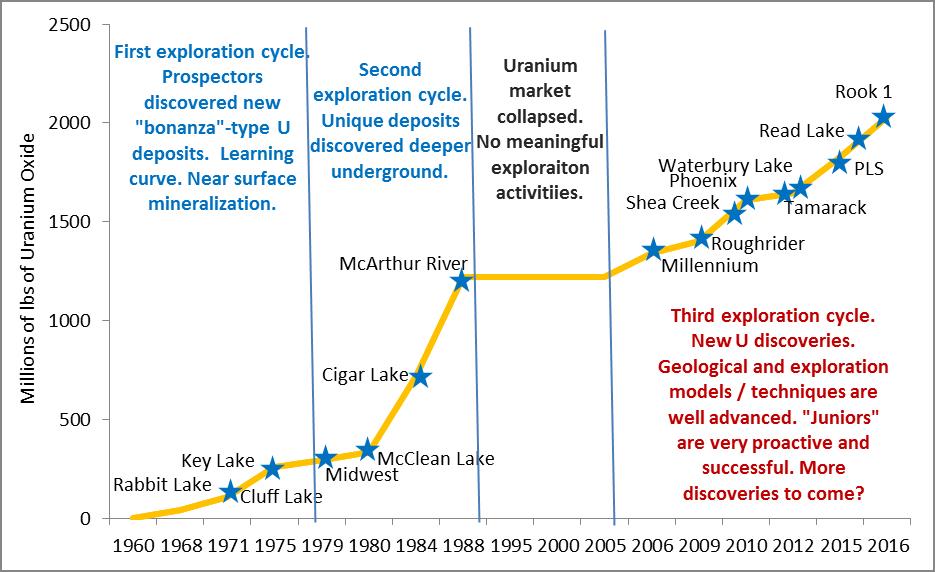
History of unconformity-type uranium deposits discovery in Athabasca. Millions of cumulative pounds of uranium oxide. Source: IntelligenceMine.
In 1990-2005, because of uranium market collapse, no meaningful exploration activities occurred in Athabasca. In this period, only major companies like Cameco and Areva kept spending their significantly reduced exploration budgets in this area, mainly within or around existing deposits. In 2006, their efforts were crowned with the Millennium deposit discovery, intercepted at the depths below 600 meters.
Simultaneously, third major exploration period commissioned in Athabasca, triggered by the Nuclear Renaissance promises and revived uranium market.
This period is still ongoing and characterizes by the following factors:
– huge injection of the private capital into a small and medium junior exploration companies that ended up with real results and discovery of a number of new high-grade deposits,
– dozens and dozens of juniors and majors are proactively exploring new bonanza-type uranium deposits, making Saskatchewan the only region in the world where uranium exploration is still active and even expanding, despite lasting uranium market uncertainties,
– all geological and exploration concepts in relation to the Athabasca Basin have finally been converted into the common knowledge and practical technologies and techniques, available not only for big corporations,
– Saskatchewan is one of the world’s best mining jurisdictions in terms of ease of doing business – a big factor behind the uranium exploration boom in the province.
As a result of third exploration cycle, there were a number of high-grade high-tonnage discoveries in Athabasca announced to date:
– in 2009, Hathor Exploration (later acquired by Rio Tinto) discovered Roughrider deposit with uranium grades in ore of up to 17%,
– in 2010, Denison Mines and Cameco first revealed resource evaluation for their recently discovered Phoenix deposit at the Wheeler River Project, with uranium grades exceed 19%,
– the same 2010 year, Areva and UEX Uranium Exploration released an initial mineral resource estimate for the Kianna, Anne and Colette deposits on the Shea Creek property,
– in 2012, Cameco and Areva reported resources at Tamarack deposit and Denison reported resources for Waterbury Lake deposit,
– In 2015, Fission Uranium Corp. discovered Patterson Lake South deposit with uranium grades of up to 23%, and Cameco released its first resource estimate for the Read Lake deposit,
– the most recent uranium discovery in Athabasca is NexGen Energy’s Rook 1 deposit with high-grade resources reported January this year.
Currently, a total of 2691 claims and 21 permits are in and around Athabasca held by 122 companies and individuals, with 15 additional claims that are still pending.
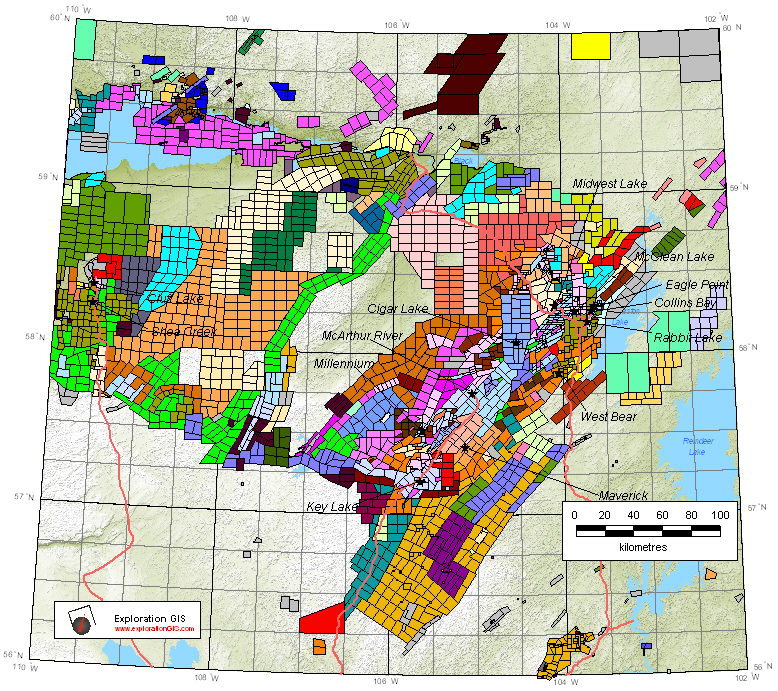
Map of exploration claims and permits in Northern Saskatchewan, as of January 2016. Source: Exploration GIS.
Keeping in mind that only a small portion of the Athabasca Basin’s deep horizons been explored to date, there are certainly more discoveries to come.
To learn more about uranium exploration companies in Saskatchewan and their recent drill results, please visit the IntelligenceMine database, which provides researchers, investors and suppliers with up to date global mining market intelligence – mining and mineral exploration company reports; mine, project and processing facility reports; securities filings; an interactive mapper and much more.
Learn more about IntelligenceMine.